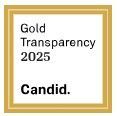Calls Needed to Protect National Weather Service Operations
We at the Oklahoma Institute for Child Advocacy (OICA) extend our deepest condolences to families tragically impacted by the recent flooding in Texas.
Flooding along the Guadalupe River early Friday caught residents, summer campers, and tourists off-guard. Monday, the death toll rose to 81 across six counties. In Kerr County, officials reported 68 deaths — 40 adults and 28 children. Camp Mystic said it was grieving the loss of 27 campers and counselors.
The catastrophic flooding struck with a surge of 20-26 feet on the Guadalupe River near Kerrville, causing widespread damage. President Donald Trump has signed a major disaster declaration for Kerr County, which is west of Austin.
People have asked how something like this could happen. A flood watch was issued at 1:18 p.m. on July 3, and then on July 4, a flash flood warning was issued at 1:14 a.m. The river was above flood stage between 3 and 4 a.m., and a flash flood emergency was issued at 4:03 a.m. in Hunt, Texas, then 5:34 a.m. in Kerrville.
As this happened early in the morning, unless someone was prepared with a weather radio or had a mobile phone with service, they would not know of the severity of the weather. Kerr County had considered installing severe weather sirens and a flood monitoring system in 2017, but that was shelved due to costs.
Most cellphone alerts came from the National Weather Service’s Austin/San Antonio station. But some alerts about life-threatening flooding didn’t come until the predawn hours, and this is located in areas where cellular reception was spotty.
The holes in this warning system and others around the nation, as Oklahomans impacted recently by tornados can attest, are not new and highlight the challenge of urgently communicating weather risks across rural America. Added to this danger, the National Oceanic and Atmospheric Administration (NOAA) just one week ago announced sweeping cuts to its programs, including the National Weather Service which is crucial for weather forecasting and severe weather alerts.
These cuts include the potential closure of the National Severe Storms Laboratory in Norman and the elimination of nearly 300 jobs across various weather laboratories around the nation. The proposed cuts are part of an effort to support Trump Administration budget priorities, but meteorologists warn that these reductions could lead to a decline in forecasting quality and potentially cost lives.
Project 2025, the policy blueprint suggested by the conservative Heritage Foundation, includes about four pages on NOAA and the National Weather Service. The document describes NOAA as a primary component “of the climate change alarm industry” and said it “should be broken up and downsized.”
The document further cites “commercialization of weather technologies should be prioritized to ensure that taxpayer dollars are invested in the most cost-efficient technologies for high quality research and weather data.” Investing in commercial partners will increase competition, Project 2025 said.
As someone who has lived in “Tornado Alley” in Oklahoma for most of my life, I cannot imagine what impact this could have on our safety. I understand cuts to help balance the budget, along with elimination of “waste, fraud and abuse” as is the rhetoric used for many of these overarching slashes in budgets without proper governmental budgeting review. I certainly do not recommend a “fee for service” weather alert system as this is simply passing the cost along to taxpayers to fund these alerts for those who can afford a subscription.
Please contact our federal delegation of lawmakers to encourage them to continue federal funding for state-of-the-art emergency weather alert systems through NOAA and NWS. You can see federal lawmakers’ contact information at https://tinyurl.com/OKCongDel.











